You stated the first reinforcing of the spring perch occurred for sure by 1943. So it probably started life as a 1941 or early 1942 piece.What is the difference in the reinforcing spring perch. Thanks
Announcement
Collapse
No announcement yet.
The making of a 1936 Knucklehead springer front end
Collapse
X
-
Dan In post 87 compare my 3rd photo where it is circled to the 2nd photo. It is very obvious. When I get a chance I could also take some side views and post them too.Originally posted by DANPATCH View PostYou stated the first reinforcing of the spring perch occurred for sure by 1943. So it probably started life as a 1941 or early 1942 piece.What is the difference in the reinforcing spring perch. Thanks
Jerry
Comment
-
Finally getting around to posting some more pictures. After doing a bit of research I discovered that Matt was right about the hole placement. An early springer brake anchor hole is almost exactly .100" closer to the leg than the later ones. I do not know if you can see it in this picture or not. 1937 springer on the left (black paint).
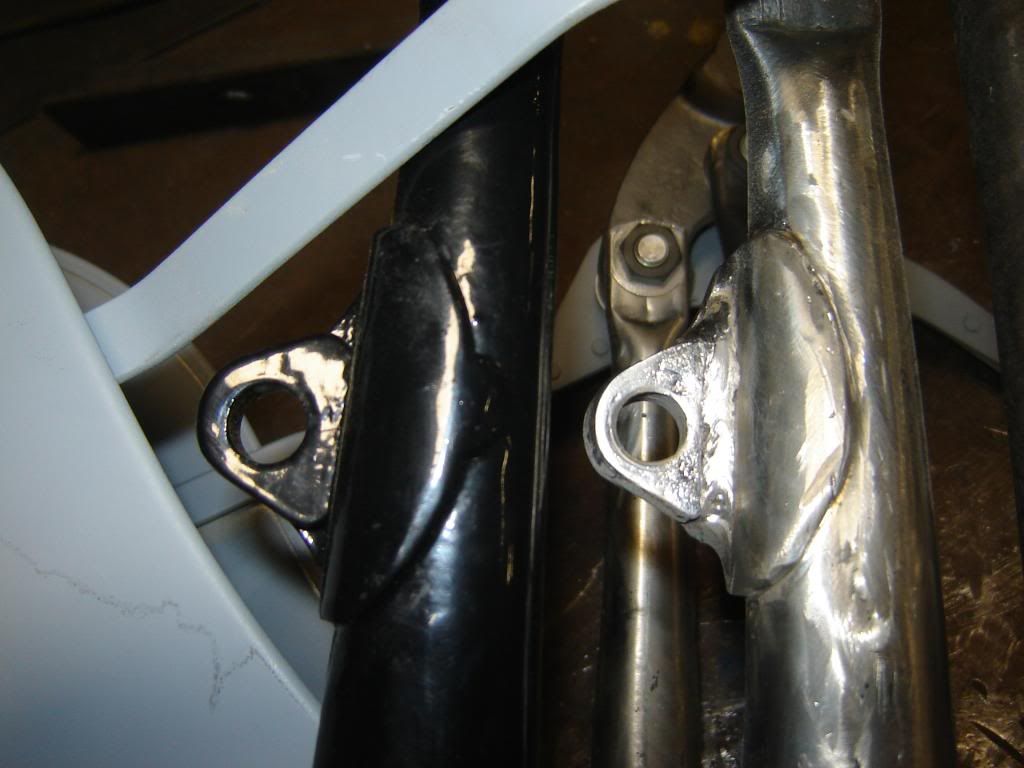
So what I am going to do is weld the hole shut using a wire feed welder. I am using the copper as a heat sink and also the wire will weld up to the copper but will not adhere. It is a good way to fill in holes.
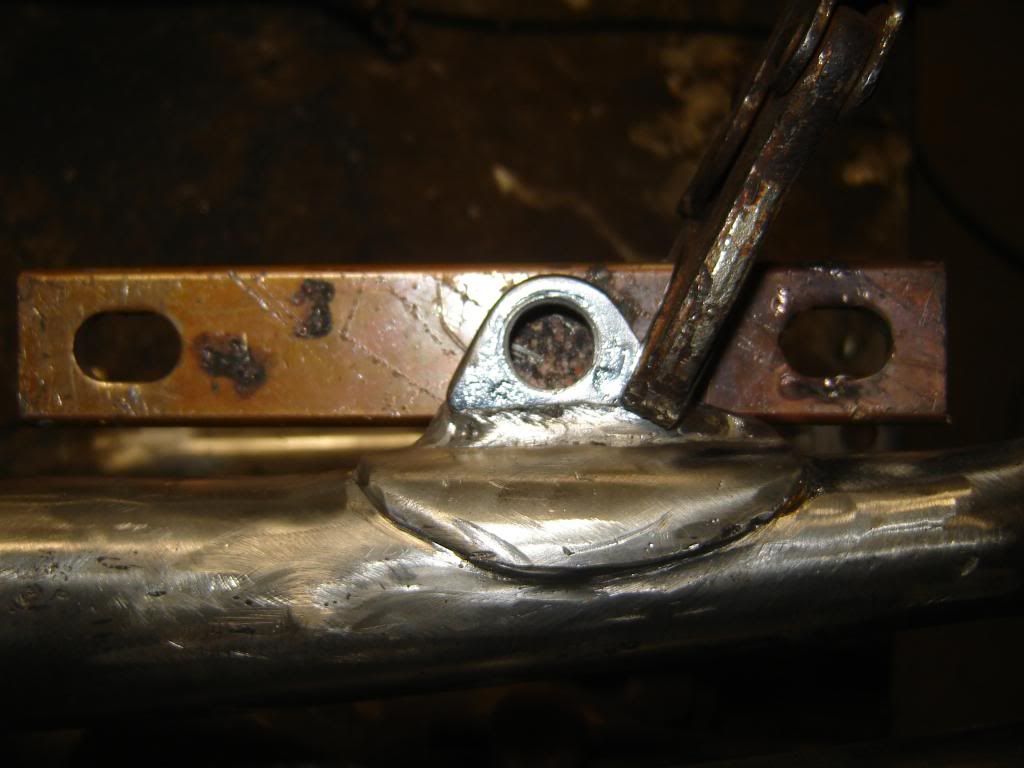
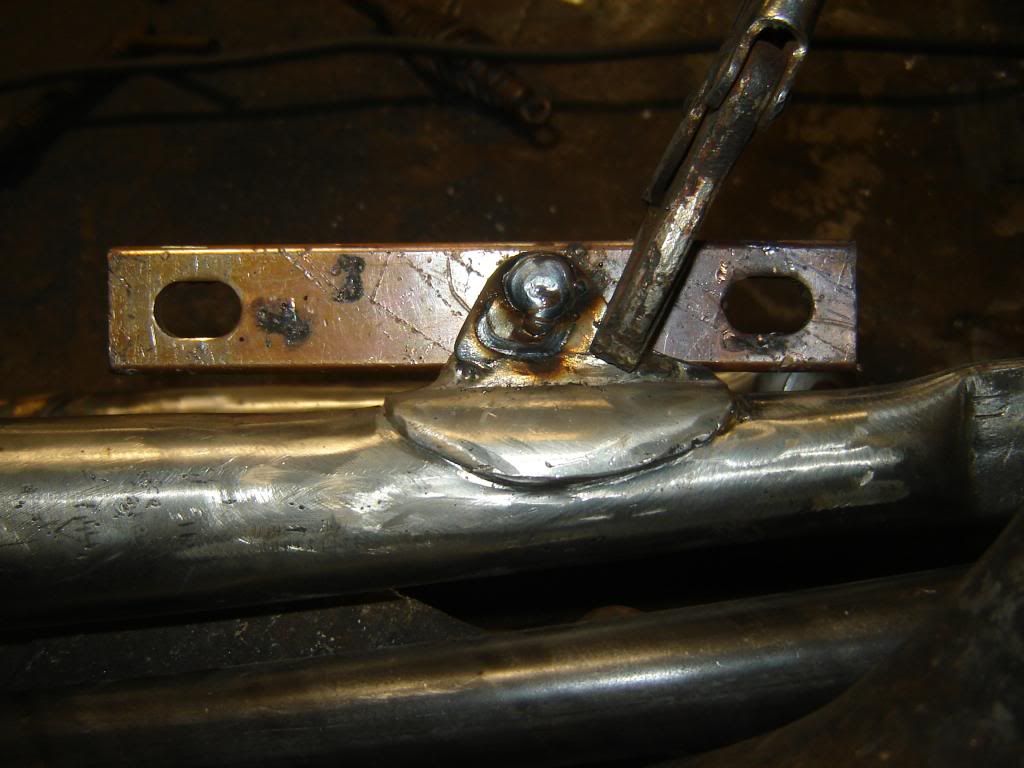
Then I carefully grind down the weld and if any porosity I weld it up again until I am satisfied. One of the downsides of wire welding (MIG) is that the welds cool fast and as a result it can be very hard to drill so I usually end up annealing it by getting it low red hot and then holding the temperature there for a minute or so and then letting it cool slow.
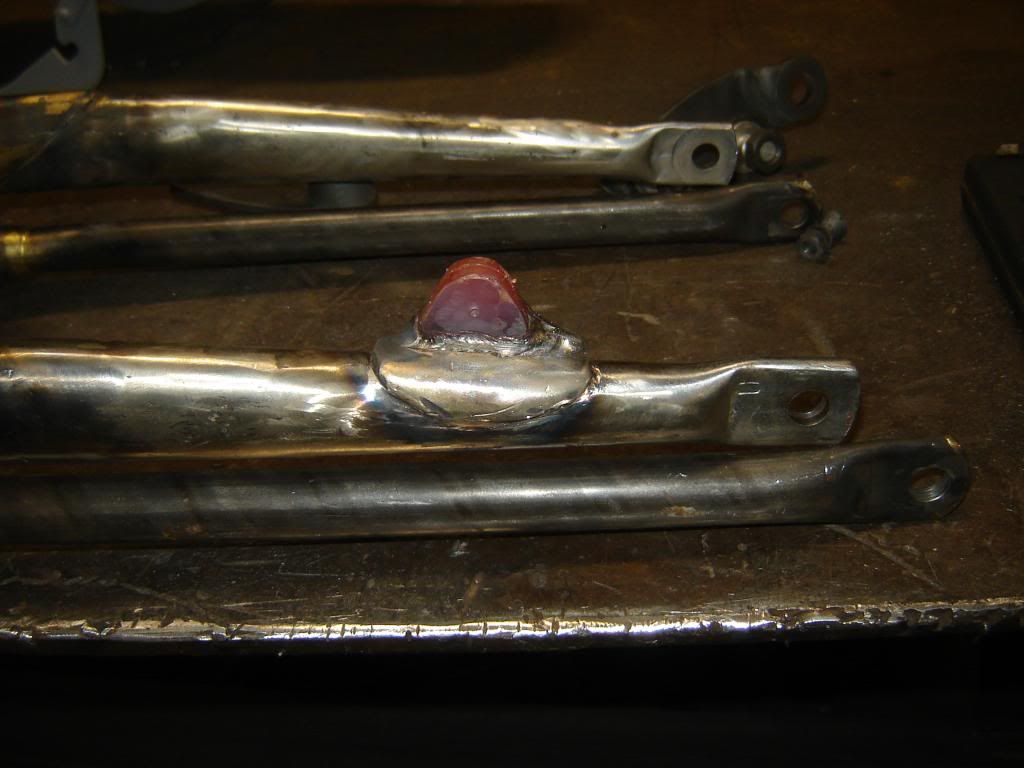
Will continue later. Jerry
Comment
-
Brazed Offset?
http://www.ebay.com/itm/141255447562...84.m1423.l2648
Here's an ebay listing of an offset fork with the rigid leg spring perch brazed and having the inside bosses for grease zerks. Is it possible this is an OEM offset fork or is it an inline with a tweeked stem?
Comment
-
I personally believe that this is a inline springer with a tweeked stem and other work done.
This first picture is from the eBay add and shows the bottom of the main brace. The second picture shows a 1948 offset springer that I have and needs help but for reference purposes look at the profile of the leading edge of each and compare.
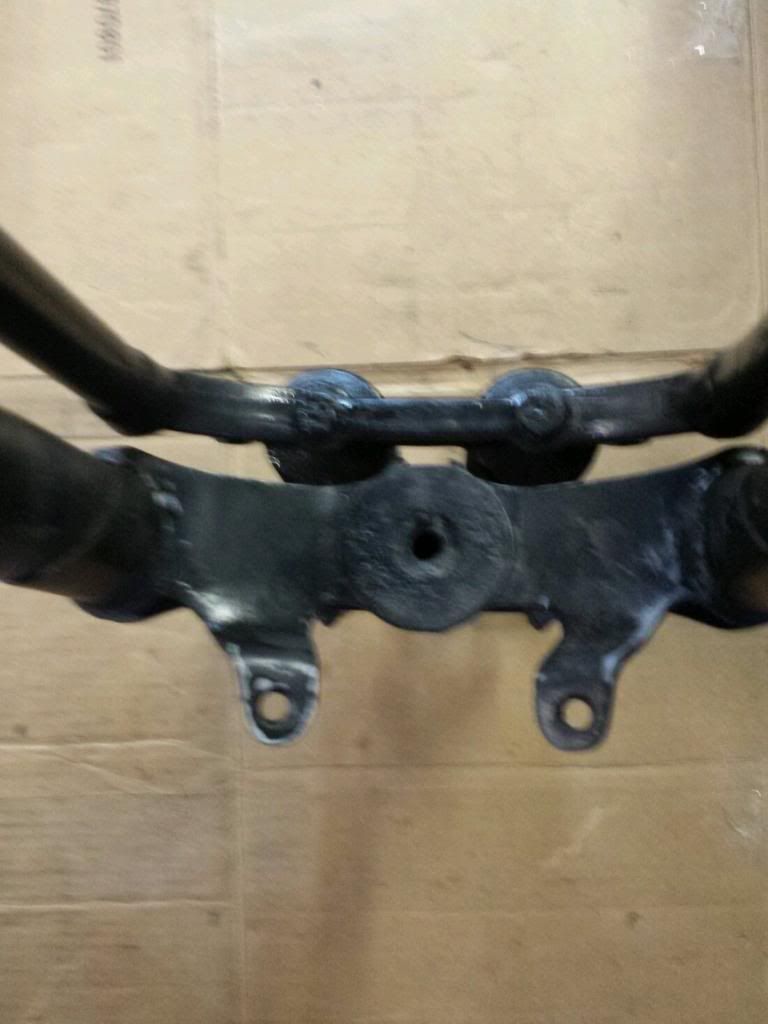

This picture is also from the auction and clearly shows a front perch that has been brazed on and that typically is earlier than 1944.
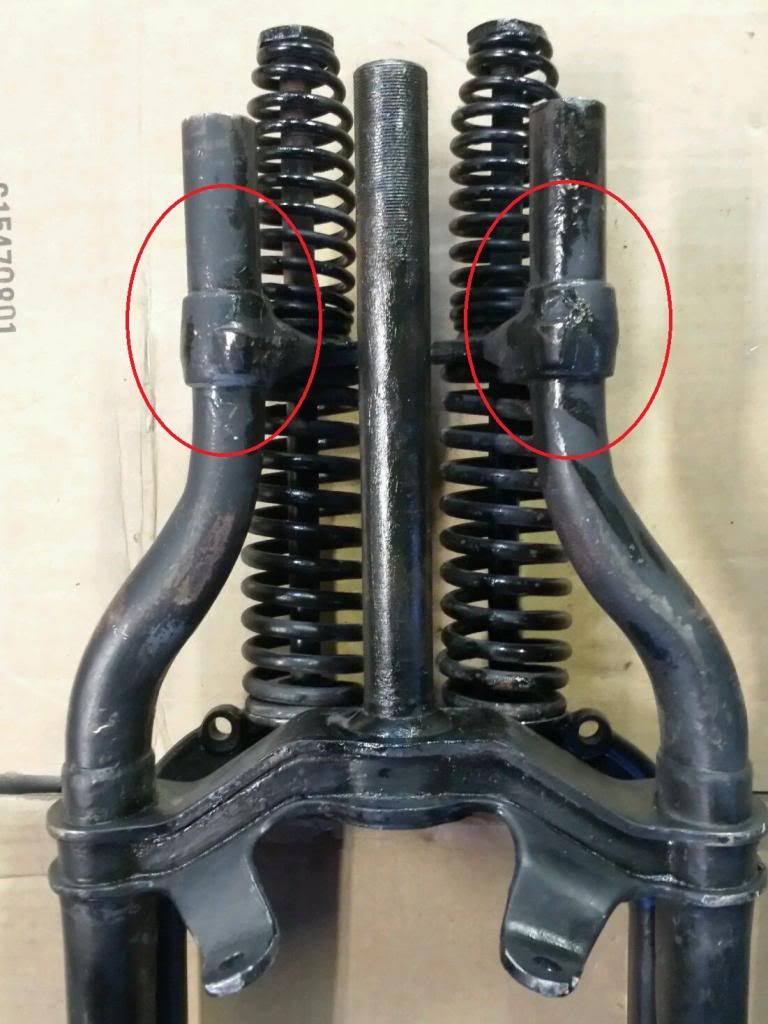
This last picture shows that brake anchor of the springer in question. Usually where one is brazed so is the other so I therefore believe this springer is not what it is advertised as.
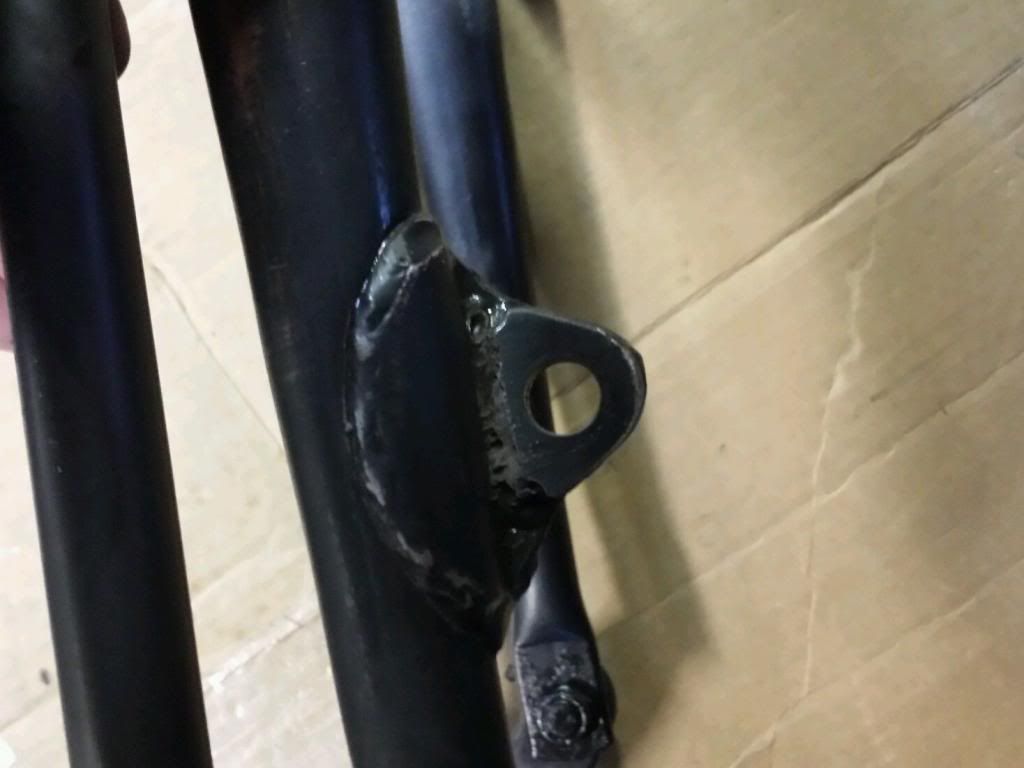
Jerry
Comment
-
Full disclosure: 1. I'm crippled and bored, so have degraded to trolling on Harley threads. 2. I'm uh Indian guy so I can speak with authority on Luland's post #77 in which he denigrates HD and it's employees ----- he is 100% spot on! Dam harley junk, anyway!! ........ that's sincerely meant to be "sporting" only..Originally posted by Kozy View PostJerry, Thanks for the reply and photos. I didn't realize there were differences in the shape of the main brace. You have a great eye for detail.
and now honestly: Jerry, you're a man of my heart, I love your work, and the rest of you your attention to all the fine little details in what once must have been a very interestingly documented history. I also envy the technological experiences many of you have that weren't available in average farm and ranch country South Dakota, but in heavy industrialized places like Milwaukee or Springfield Mass, one could more likely have witnessed earlier steel manufacturing. So, cool stuff!
I've had this little idea (theory, or hallucination), that casting molds were expanded (chisel'd out, shall we say) over time to produce reinforcements. In the example of the spring perch, the earlier mold was merely "relieved" at the outside zero bosses, and at the spring bases, to allow more material into the mold for that reinforcement. Observing Indian castings from earlier transmissions and connecting rods and cylinders, and their progressively heavier more reinforced weak points (not to mention additionally finning) would also prove the theory. What I don't know is, how long (in years) would a mold last, or, how many sand molds were used to produce the thousands (millions?) of cylinders, or rods, or cases, etc.??
btw, great thread, ... and I do love knuckles, but don't tell
Comment
Comment